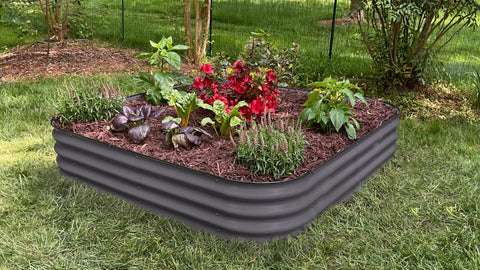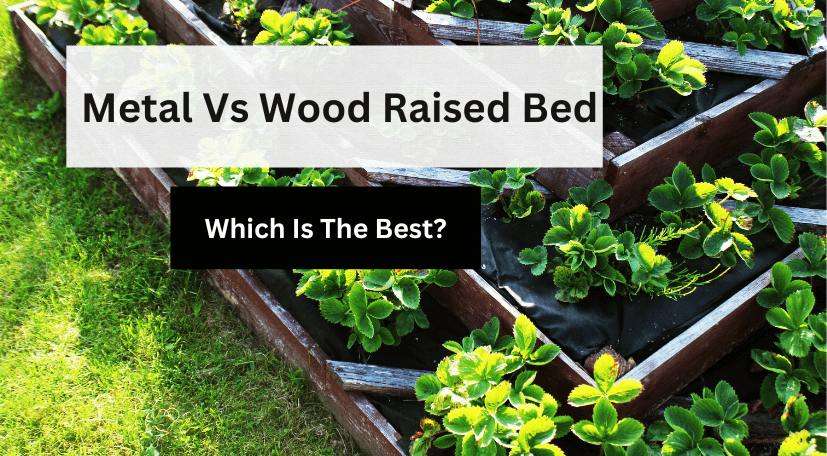In this article, we will discuss the benefits of metal and wood raised garden beds. If you are interested in off-grid living or gardening, this is the perfect topic for you! We will explore the advantages of both materials and help you decide which option is best for your needs. So, let’s dive in and learn more about the pros and cons of metal and wood raised garden beds!
Comparing the Benefits: Metal Vs. Wood Raised Garden Beds
Off Grid Living
Living off the grid has become increasingly popular in recent years. Many people are embracing the idea of self-sustainability and are looking for ways to reduce their carbon footprint and live a more sustainable lifestyle. One essential aspect of off-grid living is gardening, as it provides a reliable source of fresh produce and contributes to self-sufficiency. When it comes to gardening, choosing the right materials for your raised garden beds can make a significant difference in the success of your gardening endeavors.
Gardening
Gardening offers numerous benefits for both the environment and the gardener. It allows you to grow your own organic produce, reducing your reliance on store-bought fruits and vegetables. Additionally, gardening helps improve air quality, provides an opportunity for physical exercise, and enhances mental well-being. With various gardening techniques available, it is essential to explore the different options and find the one that suits your needs and preferences.
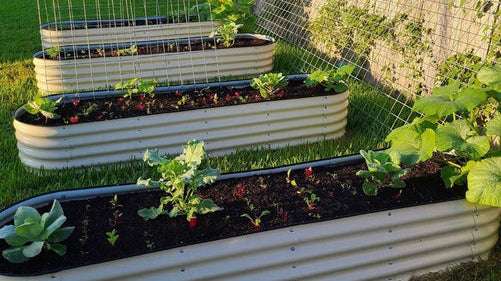
Introduction to Raised Garden Beds
Raised garden beds have gained popularity due to their many advantages over traditional in-ground gardening. These beds consist of enclosed containers filled with soil, creating a controlled environment for plant growth. They offer better drainage, prevent soil compaction, and are easier to maintain. Raised garden beds also provide a more manageable gardening experience by reducing the strain on your back and knees.
What are Raised Garden Beds?
Raised garden beds are essentially elevated gardening containers that are typically rectangular in shape. They can be constructed from a variety of materials, with metal and wood being the most common choices. Metal raised garden beds are typically made from galvanized steel or aluminum, while wood raised garden beds can be constructed from various types of lumber, such as cedar or redwood.
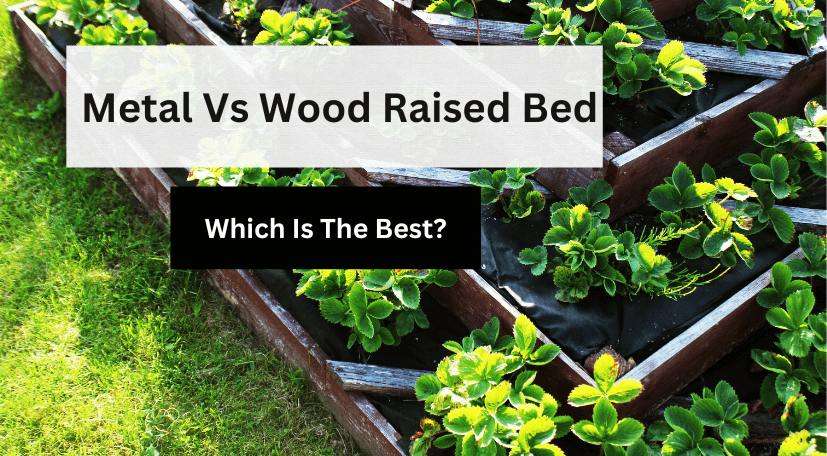
Advantages of Using Raised Garden Beds
Raised garden beds offer several advantages over traditional gardening methods. Firstly, they provide better control over soil quality, allowing you to create the optimal growing conditions for your plants. These beds are also easier to maintain, as they minimize weed growth and prevent soil erosion. Additionally, the elevated nature of raised garden beds helps protect against pests and allows for better air circulation, reducing the risk of disease. Their portability is another advantage, offering flexibility in arrangement and location within your garden.
Comparing Metal and Wood Raised Garden Beds
When deciding between metal and wood raised garden beds, it is necessary to consider various factors such as durability, cost, aesthetic appeal, and maintenance requirements. Both options have their own advantages and drawbacks, so understanding these differences will help you make an informed decision.
Overview of Metal Raised Garden Beds
Metal raised garden beds, typically made from galvanized steel or aluminum, are sturdy and long-lasting. They are resistant to rot, insects, and decay, making them a durable option for outdoor use. Metal raised garden beds also provide a sleek and modern aesthetic, adding a contemporary touch to your garden.
Pros and Cons of Metal Raised Garden Beds
One obvious advantage of metal raised garden beds is their longevity. These beds can withstand harsh weather conditions and maintain their structural integrity over time. They are also easy to clean and require minimal maintenance. However, metal raised garden beds can become hot under direct sunlight, posing a risk of overheating the soil. Additionally, the initial cost of metal raised garden beds is higher compared to wood alternatives.
Overview of Wood Raised Garden Beds
Wood raised garden beds are a classic choice that offers a natural and rustic appearance. Cedar and redwood are commonly used due to their natural resistance to rot and insects. Wood raised garden beds blend seamlessly into any garden style and can be easily customized to fit your aesthetic preferences.
Pros and Cons of Wood Raised Garden Beds
Wood raised garden beds have a traditional charm that many gardeners find appealing. They can also be less expensive than metal raised garden beds, especially when using more affordable wood options such as pine. However, wood raised garden beds require regular maintenance to prevent rot and decay. They may also have a shorter lifespan compared to their metal counterparts.
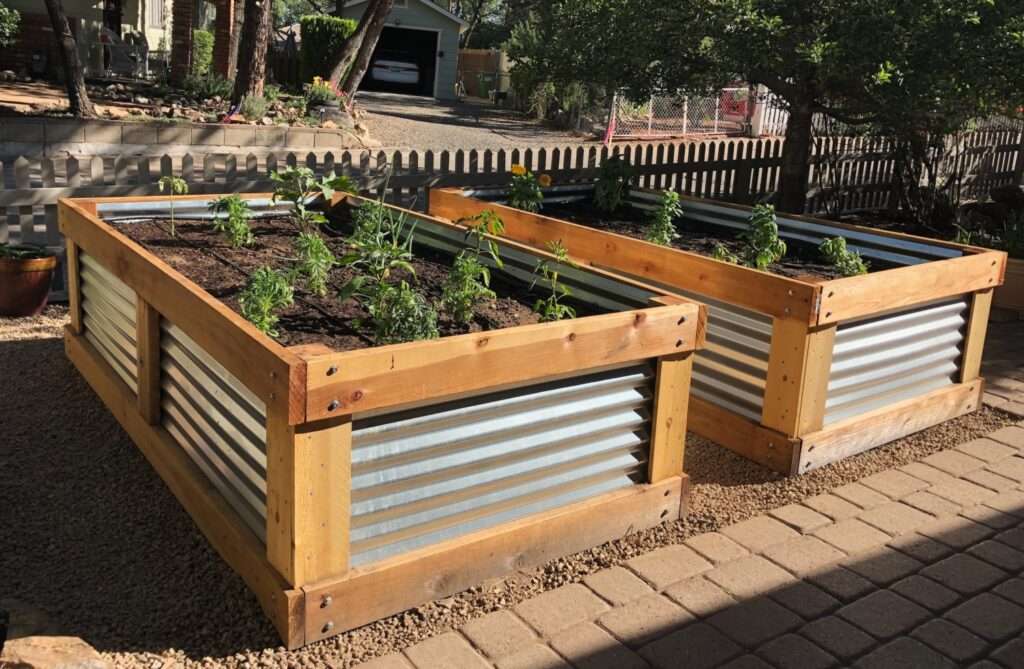
Factors to Consider When Choosing Between Metal and Wood
To make the right choice between metal and wood raised garden beds, it is important to consider several factors that are specific to your individual needs and preferences.
Durability
In terms of durability, metal raised garden beds have a clear advantage. Their resistance to rot, insects, and decay ensures a longer lifespan compared to wood. However, wood raised garden beds can still be durable if made from rot-resistant lumber.
Cost
When it comes to cost, wood raised garden beds are generally more affordable, especially if you opt for less expensive wood options. Metal raised garden beds can have a higher initial cost, but they may require fewer replacements or repairs over time, potentially making them more cost-effective in the long run.
Aesthetic Appeal
Both metal and wood raised garden beds offer unique aesthetic qualities. Metal beds provide a sleek and modern look that complements contemporary garden designs. On the other hand, wood raised garden beds have a natural and rustic charm that fits seamlessly into various garden styles.
Maintenance Requirements
Maintenance requirements differ between metal and wood raised garden beds. Metal beds are virtually maintenance-free, requiring only occasional cleaning. Wood beds, however, need regular upkeep to prevent rot and decay. This includes applying a protective coating and periodically replacing any rotted boards.
Conclusion
In conclusion, both metal and wood raised garden beds have their own benefits and drawbacks. When choosing between the two, it is essential to consider factors such as durability, cost, aesthetic appeal, and maintenance requirements. Metal raised garden beds offer superior durability, a modern aesthetic, and minimal maintenance. On the other hand, wood raised garden beds provide a traditional charm, lower initial cost, and customization options. Ultimately, the decision should be based on your individual preferences and priorities. So, whether you choose metal or wood, raised garden beds offer an excellent solution for successful gardening in any environment.
